Are you wondering what scuba diving equipment is needed when you go on a scuba diving adventure?
Diving into the underwater world is one of the most exhilarating experiences humans can enjoy. It’s a unique way to explore many sights, sounds, and smells! Ready to take the plunge? Fun scuba diving awaits you – but before you get your fins wet, you’ll need some essential items to have an enjoyable and safe time.
To dive into this activity successfully, build your personal scuba gear wardrobe. From weights and weight belts to dive computers and lights, it pays to be well-equipped! Whether you’re new to diving or a veteran of the deep blue sea – ensure you’ve got all the items on this Essential List so that each journey below leads you closer to an unforgettable adventure.
What Scuba Diving Equipment Is Needed: Scuba Diving Equipment Checklist
Ready to go diving? Here’s a quick checklist:
Diving Mask
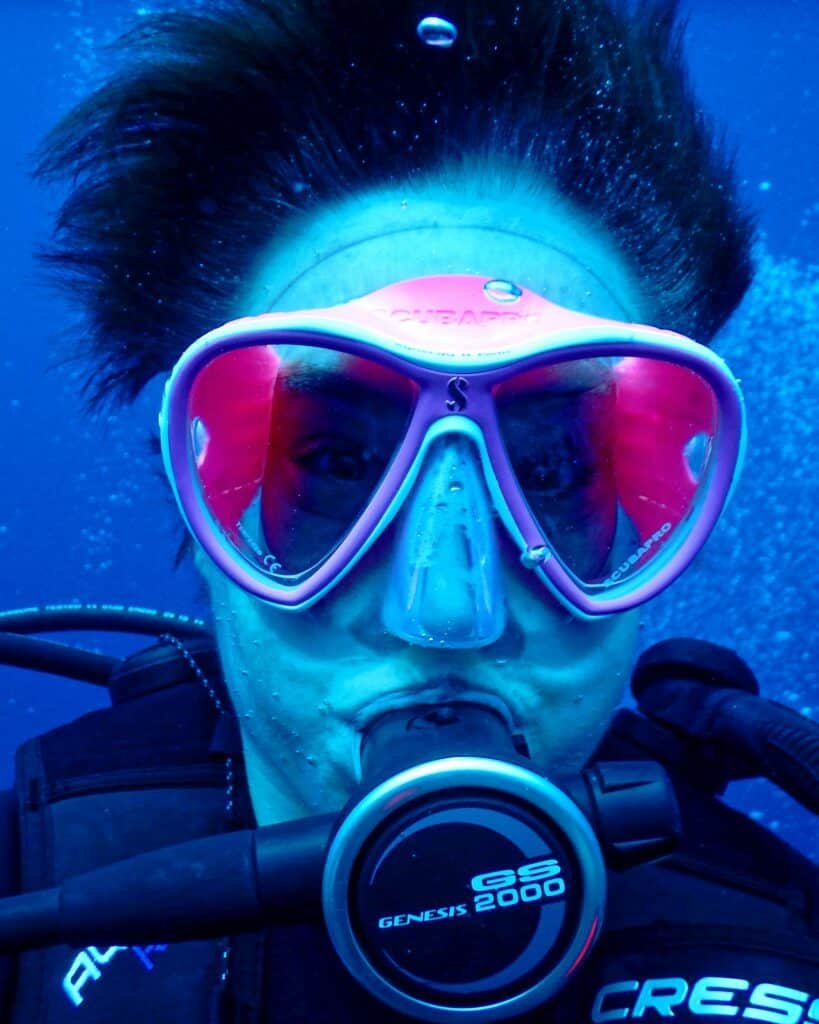
Scuba divers cannot go underwater without their masks. It’s the only way to keep your eyes open while swimming, allowing you to take in the breathtaking scenery beneath the waves. Typical eye protection, such as goggles, is inadequate.
A good diving mask will allow you to see well and will float in the water if you drop it. But how can you pick the right mask when there are so many options?
Make sure the scuba mask is a good fit for your face by trying it on and making sure it feels good. Also, ensure the glass lenses aren’t too thin or too thick. Higher-grade scuba masks use tempered glass. This is a must if you intend to dive around coral or rocks where broken fragments may be disturbed or thrown up into the water column, which can cause injury without tempered glasses protection. You’ll want to ensure air isn’t leaking out when inhaling through it, too.
This is one of the great benefits of using a double-lensed mask instead of cheaper single models, which tend to be a little weaker in that aspect! Finally, consider any additional features like interchangeable lenses and what type of straps will best suit your usage frequency. Once all these criteria are met, you’ve found yourself an ideal match!
Drysuit or Wetsuit
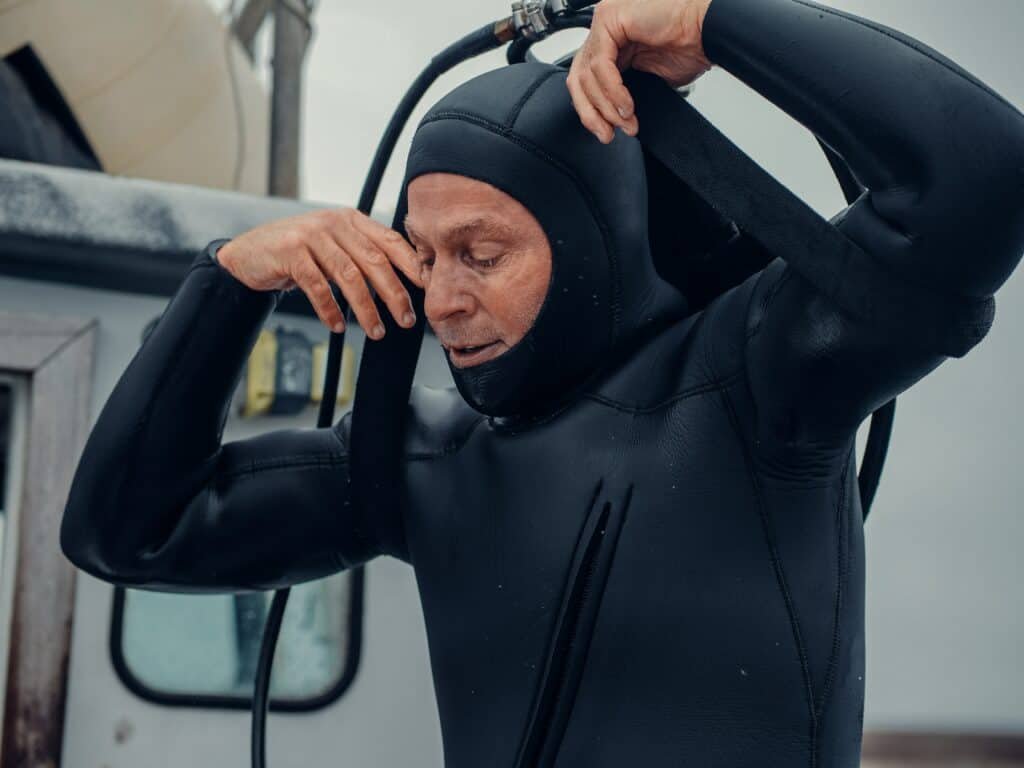
A drysuit or wetsuit is essential for comfortable and enjoyable scuba diving. The suit seals in warmth, which is essential when you’re exploring the depths of the ocean. Without this protection against the cold waters of up to 120 feet, many scuba divers would experience uncomfortable chills or effects from hypothermia.
Diving suits also come with padding to provide extra insulation and comfort, reduce injury and improve buoyancy control for a more relaxed dive. Plus, bodily fluids are kept from the delicate skin, promoting hygienic conditions underwater.
All these benefits combine to make a drysuit or wetsuit an absolute must-have item that every diver needs to be prepared for when truly entering the ocean’s depths!
Scuba Fins
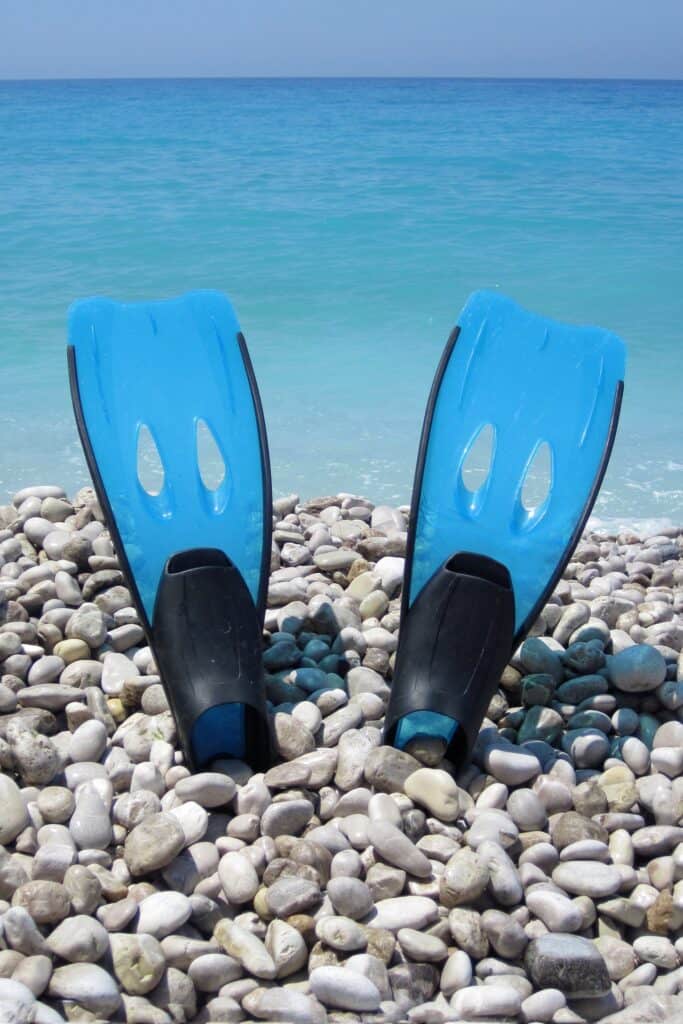
Think of them as underwater extensions of your legs that propel you through the liquid world. Dive Fins are designed to provide efficient propulsion, increase maneuverability, and decrease fatigue. Without fins, you’d have difficulty reaching the depths you desire to explore.
With fins, however, you can move through the water more confidently and cover more distance quickly and efficiently than swimming without fins. Moreover, because fin strokes are less tiring than swimming without them, divers can wear tanks longer and navigate cramped spaces like caves for longer periods.
Most importantly, having a pair of quality fins on your dives can help provide added safety in case you ever find yourself in a situation where rapidly moving out of harm’s way is important.
Scuba Gloves
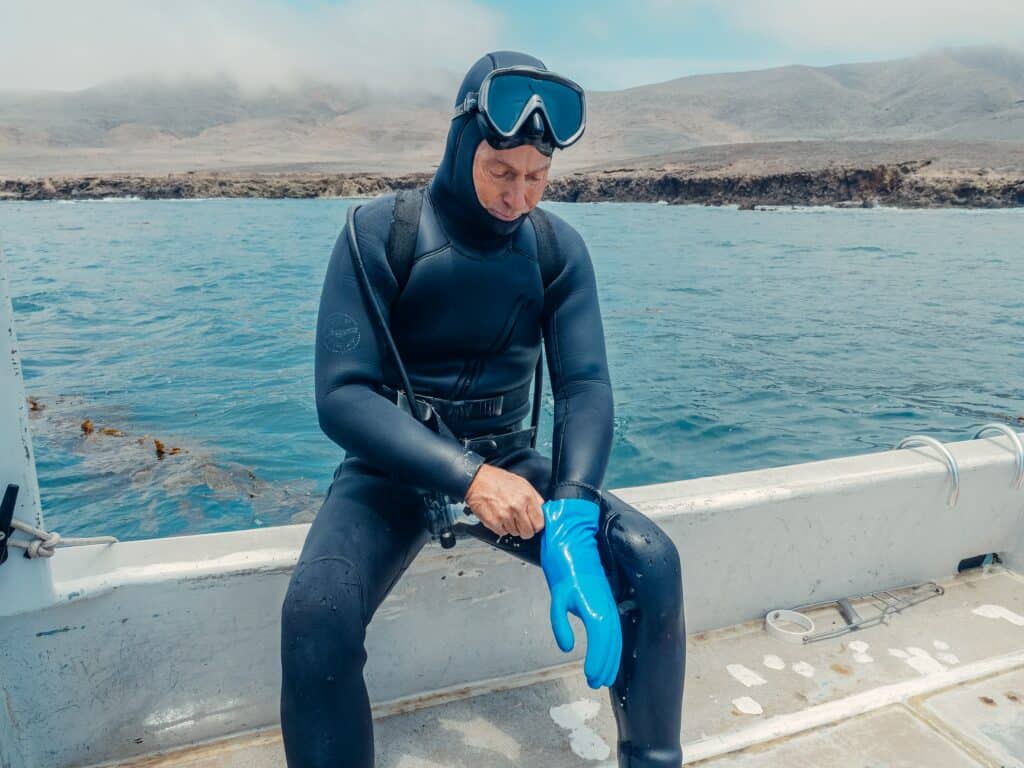
First and foremost, they provide thermal protection from both cold water and the elements. Many divers choose to wear lightweight gloves instead of heavy-duty ones as they allow more dexterity in manipulating items underwater.
Gloves also protect your hands from jagged coral and rocks that can cut or scrape without you even realizing it while exploring an underwater environment. Not to mention, they act as a barrier against bacteria, sea life, and other creatures that can cause minor skin irritations.
Scuba Tank
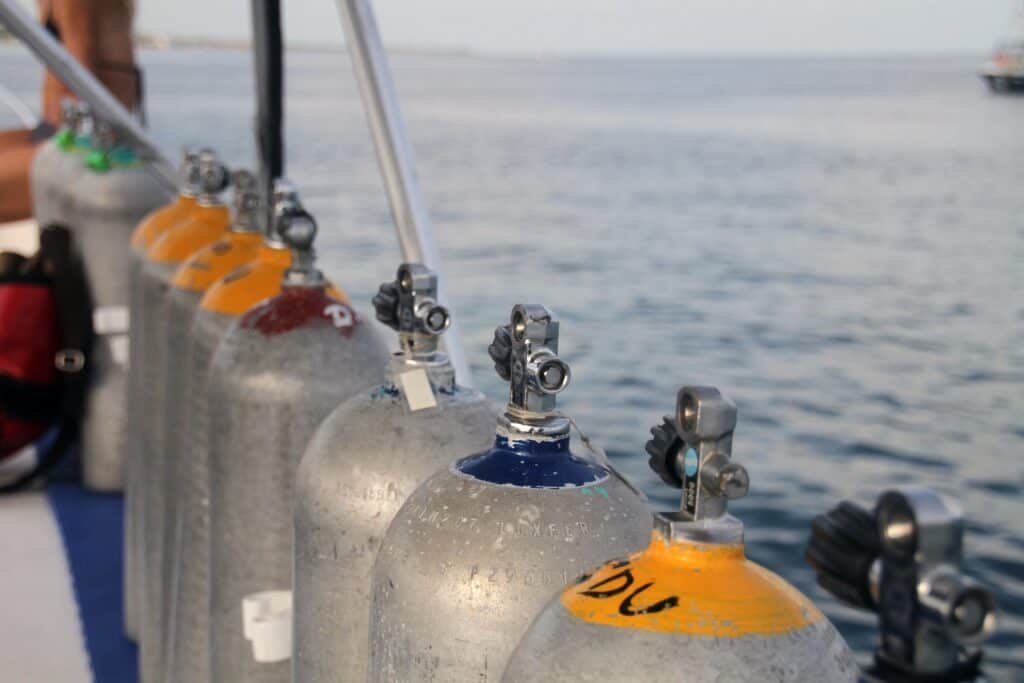
Scuba tanks are an essential piece of diving gear as they store the air that divers rely on throughout the duration of their dive. The ability to breathe underwater for extended periods is impossible without it. The tank must be securely fastened and checked for signs of corrosion and damage before a diver enters the water.
They come in various sizes and metal alloys with different amounts of air capacity. Anywhere from 7 to 12 liters, depending on what you need. The most popular size is usually around 10 liters. But if you plan on a longer dive, bigger will always be better.
Scuba Diving Regulator
The scuba regulator allows air to flow into the mouthpiece at a comfortable pressure and rate, decreasing the effort used to breathe underwater. Without a regulator, divers would need to use their own physical strength to forcefully suck in air from the tank. Somewhat like sucking through a straw — causing discomfort.
The regulators make this process easier and allow for more enjoyable dives. Regulators are also equipped with a valve that increases or decreases the available air supply on demand, which helps manage air pressure.
Finally, regulators feature an additional mouthpiece that fits over the primary one that can be shared by two people when diving together — always helpful.
Depth Gauge, Submersible Pressure Gauge, And Compass
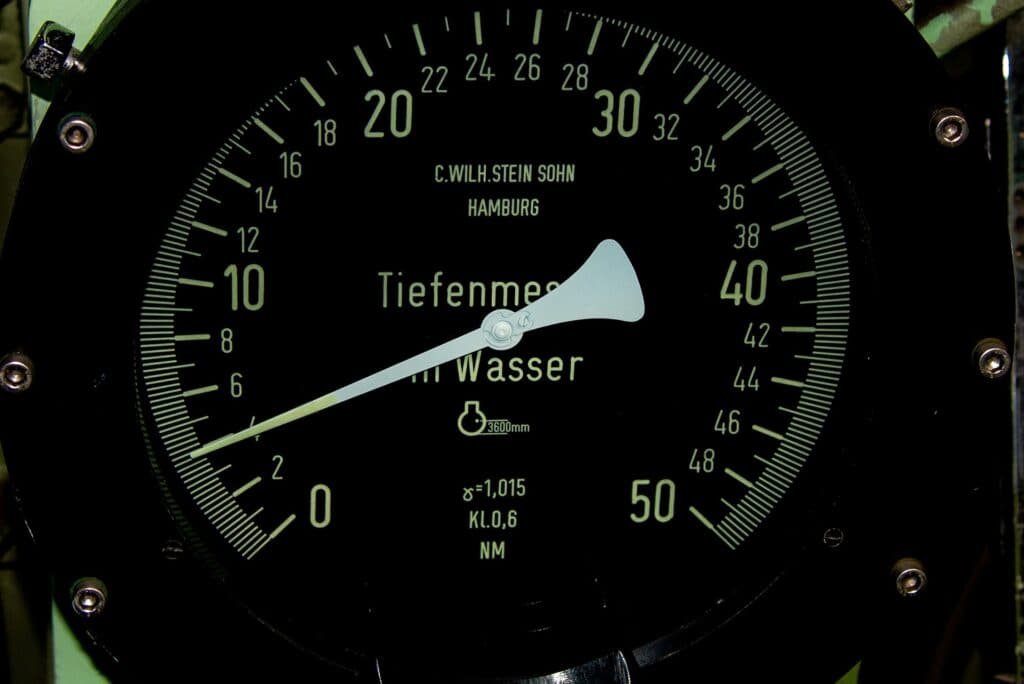
These little gadgets are essential for any diving enthusiast since they let you know critical information like how deep you are in the water and how much air is left in your tank. So there’s no guesswork as to when you need to ascend back up to the surface.
The compass also comes in handy by helping you navigate vast bodies of water. Keeping you on track if visibility gets low or helping you avoid getting lost from shore or from a boat.
What Scuba Diving Equipment Is Needed: Dive Computer
Dive computers track important information such as depth, water temperature, and nitrogen levels and alert divers if they enter dangerous situations. Whether you’re a beginning diver or an experienced pro, having a dive computer can make all the difference in safely and effectively participating in a dive.
The benefits of having a dive computer rather than planning dives with tables or other manual means are clear. They provide precise calculations that can help prevent both accidental decompression sickness and unsafe diving practices caused by overestimating numbers.
Another great trait is their user-friendliness. Most modern computers come equipped with high-tech touch screens that display the information needed in easy-to-read formats and eye-catching graphics and icons.
Whether you’re using an analog or digital display model, the goal remains largely the same to simplify data collection during your dives. Therefore, you can focus on enjoying yourself instead of monitoring complicated charts or calculations.
Buoyancy Control Device
It’s commonly called a BC ( Buoyancy Compensator) and is essential for safe scuba diving. It helps to control the diver’s buoyancy and position in the water. The BC performs two key functions: inflating and deflating based on how much gas is added or released from a diver’s air tank.
This not only gives the diver more control of buoyancy in the water, but it also assists with controlling their depth underwater. Additionally, because a BC can be donned quickly, it also serves as an excellent storage device for items such as dive gauges and extra layers of clothing.
Wearing one also offers other advantages, such as maintaining body position throughout a dive. Therefore, there’s no excess effort swimming around, which conserves air, increasing dive time. What’s more, once underwater, without worrying about your buoyancy, you can stay focused on enjoying the underwater views rather than just staying afloat.
Snorkel
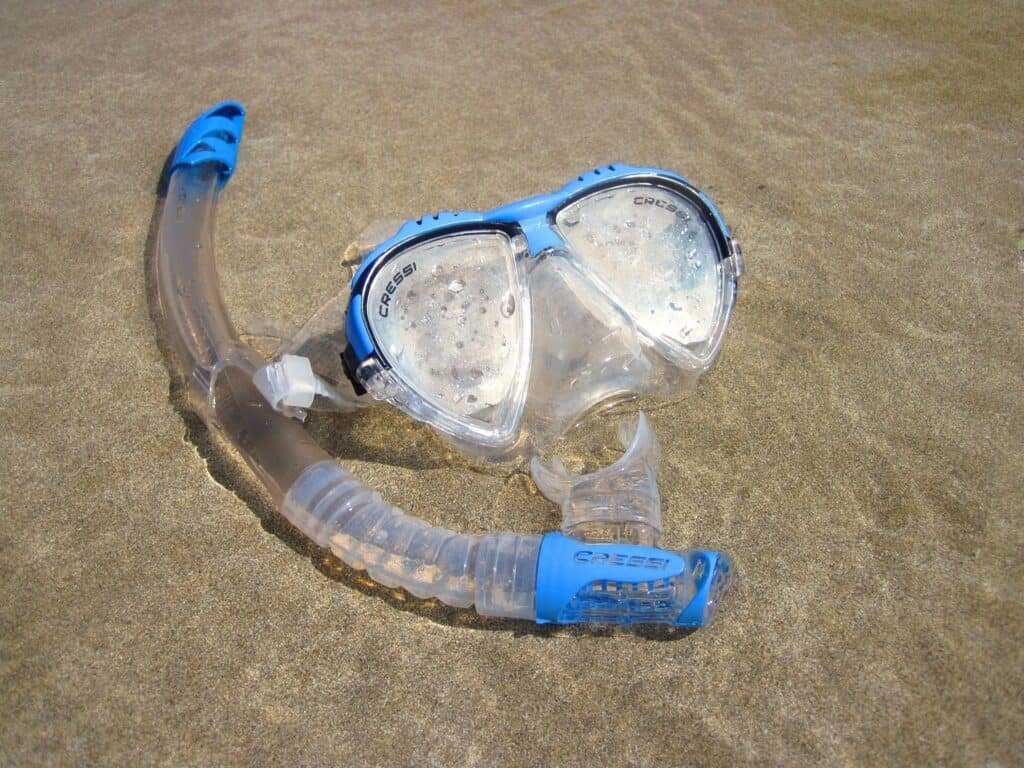
Snorkeling is essential to scuba diving because it allows you to check out the underwater environment before taking that plunge. With a snorkel, you can enjoy the sights and explore what lies beneath without submerging yourself fully in the water.
This is also beneficial for inexperienced divers. It serves as a preview of sorts and allows us to determine if anything below the surface may cause some distress (such as strong currents or dangerous wildlife).
Underwater Camera
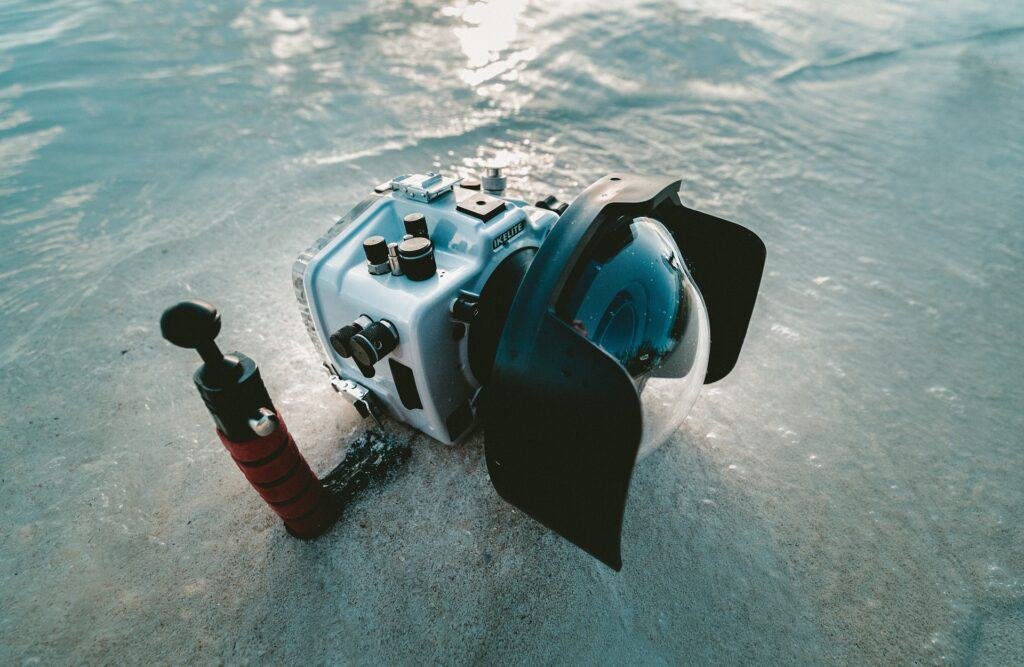
A camera allows you to capture memories of your exploration during your dive without missing out on any of the action! With so much nature to admire, landscapes, and creatures you’ll never forget. A camera allows you to snap photos and videos with the latest technology specifically designed for underwater use.
Its easy-to-use features simplify capturing these moments so divers can focus more on enjoying their dives without worries. Thus, a camera is an essential tool for any type of scuba dive adventure.
What Scuba Diving Equipment Is Needed: Other Scuba Diving Accessories
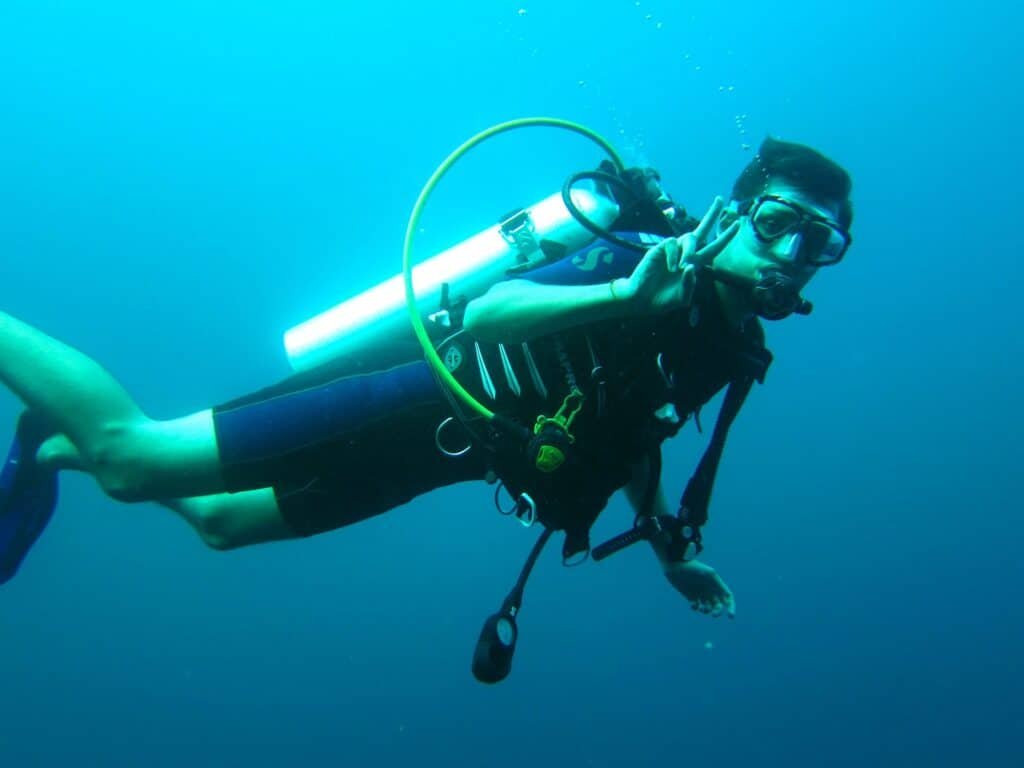
In addition to the gear listed above, there are a few other pieces of equipment that you should consider when it comes to scuba diving.
Tank Bangers
By audibly rapping or thumping on a tank, divers can communicate with each other when they are too far away to be seen or heard. This is especially valuable in scenarios with poor dive visibility, when hand signals may need to be visible more.
If your banger is going off more often than normal in one spot underwater, it could mean that the diver needs help controlling their ascent. Whether communicating a need for assistance or reassuring another diver’s presence, Tank Bangers add an extra layer of safety and security during dives.
Defogger
It helps keep the mask from fogging up during the dive, which can ruin the experience. When the mask fogs up, it’s hard to see properly. Plus, there’s an increased chance of getting separated from your dive buddy. Never a good thing when you’re underwater!
Without a defogger, a diver could easily setback their own safety and enjoyment due to impaired visibility. But thankfully, with this simple product, you can effectively reduce that concern.
What Scuba Diving Equipment Is Needed: Dive Knife
Not only do they come in handy when faced with entanglement in weeds or nets, but you can use them to pierce pressurized tanks and even underwater mooring lines. Plus, dive knives are great for corals and other marine life. They provide a safe tool for cutting away fishing lines wrapped around coral heads, helping preserve the beautiful natural environment beneath the waves. With the many scenarios where a knife can be useful to a diver, it’s worth carrying one on every dive.
Dive light
Scuba divers can only explore the depths with dive lights. They provide you with bright light underwater. Therefore, you can illuminate everything beneath the surface and take in all of its beauty.
Without lights, it’d be like exploring the seas in complete darkness! Not only do they allow you to experience the brilliant colors and creatures that await you deep under the waves. However, they also offer a great deal of safety. If there’s an emergency during your dive, light is incredibly helpful for locating and signaling devices at the surface.
What Scuba Diving Equipment Is Needed: Frequently Asked Questions
Q: Does scuba diving gear includes a dive bag and weights?
Absolutely! Most gear bags have plenty of room for essentials, like wetsuits, snorkels, fins, safety accessories, and first aid kits. Additionally, wearing weight belts helps divers submerge with ease and keep buoyancy consistent throughout their dives.
Q: Which is more convenient, buying scuba gear or renting scuba gear?
Purchasing scuba gear can definitely be convenient if you plan on going underwater fairly often. You’ll never need to worry about the availability of size and type again. Moreover, you know exactly how it fits and performs. You could even pass the equipment down generations, ensuring lasting quality and convenience. On the other hand, renting can be economical since the cost of proper scuba gear adds up quickly. Renting also offers the luxury of testing out different types of up-to-date equipment before committing to a full purchase.
Q: How much does scuba gear cost?
The truth is, the price tag of your scuba equipment depends on various factors. From where you purchase it, the type of gear purchased, to the brand itself. A basic starter set can typically cost anywhere from $350 – $700. To be sure you’re investing in quality scuba gear that will last for years to come, it’s worth spending just a little more cash upfront. To better understand overall costs, additional items such as fins, snorkels, or tanks can range from $50 – $150 each. Of course, this total doesn’t include dive computers or wetsuits — so you might want to adjust your budget accordingly!
Q: What does a surfer marker buoy look like?
Generally speaking, these buoys come in the form of a large inflatable tube marked with vibrant colors. Typically it’s bright yellow with a blue stripe running down its length, although this varies from buoy to buoy. The shape varies from standard pilings to more modern shapes, like an airplane rotor or hot air balloon basket. At the very top of these buoys are small flags that help make them visible from far away. Making it easier for surfers to stay on course as they navigate their way back to shore!
Q: Is deep sea diving equipment different from regular scuba gear?
Deep-sea diving gear is specially designed to withstand the intense pressures of such deep-water dives. Plus, it keeps divers better protected from the potential dangers that lurk in those depths. This specialized gear can include things like reinforced fins and masks, thicker wetsuits, and improved oxygen tanks. Regular scuba gear simply isn’t quite up to par when it comes to exploring beyond a few extra meters of depth.
Final Words
Now that you’ve learned about all of the necessary diving equipment, you should be well on your way to exploring the underwater world! Many novice divers mistakenly believe they need hundreds of goods to get started. Yet, with just a few essential tools, you’ll be ready in no time. Choose high-quality items with safety features in mind whenever possible while shopping for equipment. Regardless of skill level, any diver can have a fantastic time underwater with the correct equipment and a knowledgeable guide.
